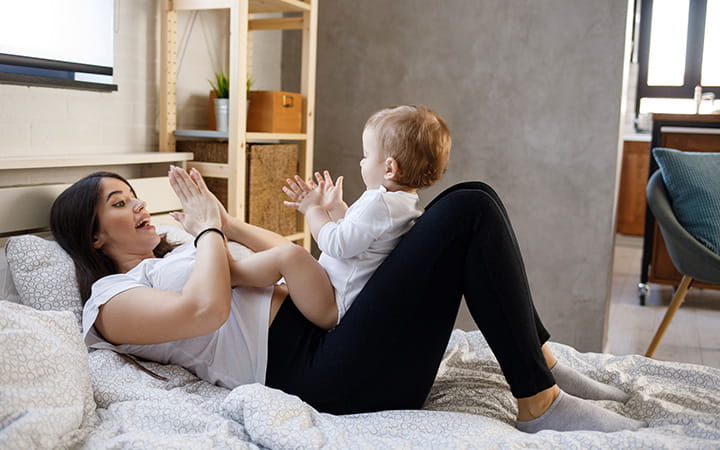How Your Child Learns To Read – and How You Can Help
November 08, 2021
 University Hospitals Rainbow Babies & Children'sExperts in Children's Health
University Hospitals Rainbow Babies & Children'sExperts in Children's Health

Babies begin learning right from the moment of birth. Spend as much time as you can talking, reading, singing and playing with your baby.
6 to 12 Months Old
| What Your Child is Saying and Learning |
What Your Child is Doing Physically |
Things Parents Should Do |
What To Read To Your Child |
| Babbles, smiles, likes parent’s voice, likes photos of babies, speaks first words, responds to name, touches picture to express interest |
Sits in lap, holds head steady, grasps book, puts book in mouth, drops or throws book |
Make eye contact and talk with your baby, point and name things, sing, talk, play, read and cuddle, follow baby’s cues for “more” or “stop” |
Nursery rhymes, board or cloth books |
12 to 24 Months Old
| What Your Child is Saying and Learning |
What Your Child is Doing Physically |
Things Parents Should Do |
What To Read To Your Child |
| Says single words, then small phrases, hands book to adult to read, points at pictures, names pictures, follows simple stories |
Does not immediately put book in mouth, holds and walks with book, turns pages of board books |
Answer when your child speaks or points at things, let your child help turn book pages, name things in book, use books in routines, use books to engage your child’s attention |
Picture books, board books, rhyming books |
2 to 3 Years Old
| What Your Child is Saying and Learning |
What Your Child is Doing Physically |
Things Parents Should Do |
What To Read To Your Child |
| Learns two to four new words a day, names objects, prefers the same book(s) repeatedly, speaks in complete sentences and rhymes |
Learns to turn paper pages, usually multiple at a time, begins to scribble |
Ask simple questions like “What is that?” or “Where’s the toy?”, read the same book repeatedly if your child wishes, talk about the pictures as you read, use books in routines |
Picture books with stories, rhyming books |
3 to 4 Years Old
| What Your Child is Saying and Learning |
What Your Child is Doing Physically |
Things Parents Should Do |
What To Read To Your Child |
| Can recite entire phases from books, begins to detect rhyme, moves toward letter recognition, pretends to read |
Flips pages one at a time from left to right, will sit still for longer books and stories, scribbles and draws |
Point out letters and numbers, ask, “What happens next?” in stories, Point out words and pictures that begin with the same sounds, make up stories with your child |
Picture books with stories, alphabet and counting books |
4 to 5 Years Old
| What Your Child is Saying and Learning |
What Your Child is Doing Physically |
Things Parents Should Do |
What To Read To Your Child |
| Learns letter names and sounds, recognizes numbers and letters, listens for longer periods of time, tells familiar stories, creates rhymes |
Begins to copy letters and numbers, shows patience to sit for even longer stories |
Relate stories to your child's experiences, ask your child to tell stories, familiarize your child with the letters of their own name, encourage your child to write and draw |
Fairy tales, books with longer stories |
 University Hospitals Rainbow Babies & Children'sExperts in Children's Health
University Hospitals Rainbow Babies & Children'sExperts in Children's Health



